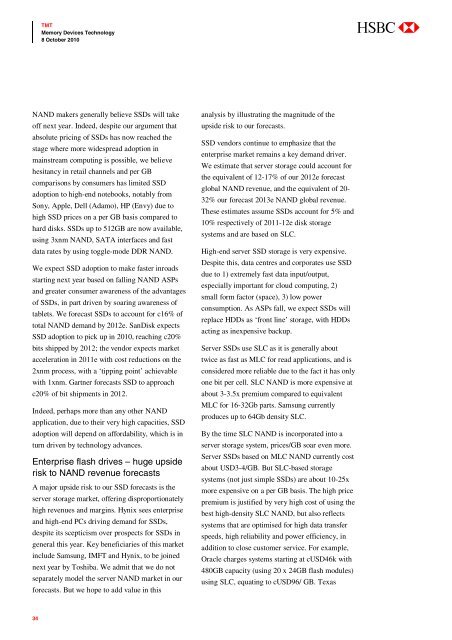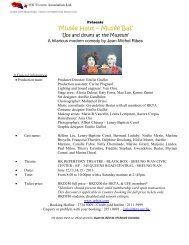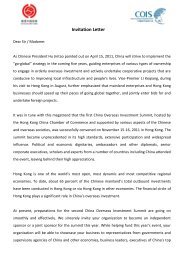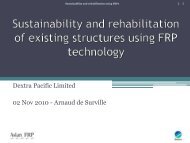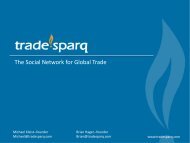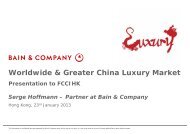Create successful ePaper yourself
Turn your PDF publications into a flip-book with our unique Google optimized e-Paper software.
TMT<br />
<strong>Memory</strong> Devices Technology<br />
8 October 2010<br />
abc<br />
NAND makers generally believe SSDs will take<br />
off next year. Indeed, despite our argument that<br />
absolute pricing of SSDs has now reached the<br />
stage where more widespread adoption in<br />
mainstream computing is possible, we believe<br />
hesitancy in retail channels and per GB<br />
comparisons by consumers has limited SSD<br />
adoption to high-end notebooks, notably from<br />
Sony, Apple, Dell (Adamo), HP (Envy) due to<br />
high SSD prices on a per GB basis compared to<br />
hard disks. SSDs up to 512GB are now available,<br />
using 3xnm NAND, SATA interfaces and fast<br />
data rates by using toggle-mode DDR NAND.<br />
We expect SSD adoption to make faster inroads<br />
starting next year based on falling NAND ASPs<br />
and greater consumer awareness of the advantages<br />
of SSDs, in part driven by soaring awareness of<br />
tablets. We forecast SSDs to account for c16% of<br />
total NAND demand by 2012e. SanDisk expects<br />
SSD adoption to pick up in 2010, reaching c20%<br />
bits shipped by 2012; the vendor expects market<br />
acceleration in 2011e with cost reductions on the<br />
2xnm process, with a ‘tipping point’ achievable<br />
with 1xnm. Gartner forecasts SSD to approach<br />
c20% of bit shipments in 2012.<br />
Indeed, perhaps more than any other NAND<br />
application, due to their very high capacities, SSD<br />
adoption will depend on affordability, which is in<br />
turn driven by technology advances.<br />
Enterprise flash drives – huge upside<br />
risk to NAND revenue forecasts<br />
A major upside risk to our SSD forecasts is the<br />
server storage market, offering disproportionately<br />
high revenues and margins. Hynix sees enterprise<br />
and high-end PCs driving demand for SSDs,<br />
despite its scepticism over prospects for SSDs in<br />
general this year. Key beneficiaries of this market<br />
include Samsung, IMFT and Hynix, to be joined<br />
next year by Toshiba. We admit that we do not<br />
separately model the server NAND market in our<br />
forecasts. But we hope to add value in this<br />
analysis by illustrating the magnitude of the<br />
upside risk to our forecasts.<br />
SSD vendors continue to emphasize that the<br />
enterprise market remains a key demand driver.<br />
We estimate that server storage could account for<br />
the equivalent of 12-17% of our 2012e forecast<br />
global NAND revenue, and the equivalent of 20-<br />
32% our forecast 2013e NAND global revenue.<br />
These estimates assume SSDs account for 5% and<br />
10% respectively of 2011-12e disk storage<br />
systems and are based on SLC.<br />
High-end server SSD storage is very expensive.<br />
Despite this, data centres and corporates use SSD<br />
due to 1) extremely fast data input/output,<br />
especially important for cloud computing, 2)<br />
small form factor (space), 3) low power<br />
consumption. As ASPs fall, we expect SSDs will<br />
replace HDDs as ‘front line’ storage, with HDDs<br />
acting as inexpensive backup.<br />
Server SSDs use SLC as it is generally about<br />
twice as fast as MLC for read applications, and is<br />
considered more reliable due to the fact it has only<br />
one bit per cell. SLC NAND is more expensive at<br />
about 3-3.5x premium compared to equivalent<br />
MLC for 16-32Gb parts. Samsung currently<br />
produces up to 64Gb density SLC.<br />
By the time SLC NAND is incorporated into a<br />
server storage system, prices/GB soar even more.<br />
Server SSDs based on MLC NAND currently cost<br />
about USD3-4/GB. But SLC-based storage<br />
systems (not just simple SSDs) are about 10-25x<br />
more expensive on a per GB basis. The high price<br />
premium is justified by very high cost of using the<br />
best high-density SLC NAND, but also reflects<br />
systems that are optimised for high data transfer<br />
speeds, high reliability and power efficiency, in<br />
addition to close customer service. For example,<br />
Oracle charges systems starting at cUSD46k with<br />
480GB capacity (using 20 x 24GB flash modules)<br />
using SLC, equating to cUSD96/ GB. Texas<br />
34


